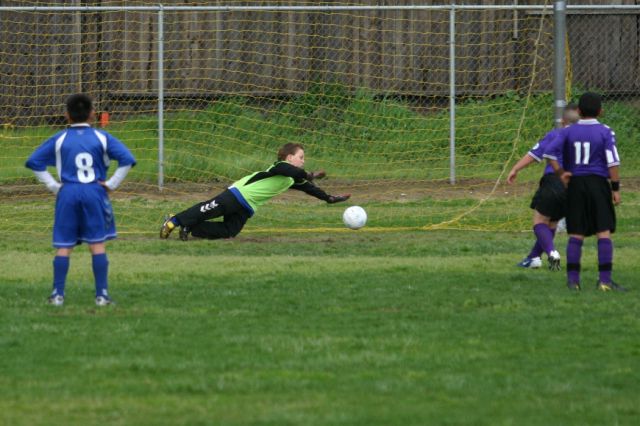 A Troubling E-Mail
A Troubling E-Mail
I recently received an e-mail from a Florida father whose 10-year-old daughter suffered a severe gash to her forehead when she collided with the sharp metal edge of a soccer goalpost in a U10 game at Disney's Wide World of Sports Complex in Orlando, Florida. When her father asked the Florida Youth Soccer Association to require padded goalposts to eliminate such injuries in the future, he was told that such a change was not sanctioned by FIFA, soccer's world governing body. It is time for FIFA to change its stance on padded goalposts in youth soccer
Goalies suffer a disproportionate number of injuries compared to those playing other positions. The American Journal of Sports Medicine reported in 1995 that, even though goalies comprise only six percent of soccer players, they suffer nineteen percent of all soccer injuries. When a player collides with the post of a heavy, stationary goal post, the player absorbs all of the impact of the collision. Goalies and other players also run the risk of being injured by the sharp edges of goalposts.
Could padding the goal post reduce the risk of such serious injuries? After testing padded goal posts in both the laboratory and the field, the Consumer Product Safety Commission concluded that padded posts do indeed reduce significantly the number and severity of injuries, and are especially effective in reducing injuries to the head, such as concussions Impact laboratory testing has shown that the force of impact is reduced between thirty-one and sixty-three percent by protective goal post padding.
Dr. David Janda, an orthopedic surgeon, MomsTeam expert, and director of the Institute for Preventative Sports Medicine in Ann Arbor, Michigan, has developed a goal post padding system thin enough not to interfere with the game but substantial enough to reduce the force of impact, on average, up to 63%. The pads are one half inch thick and are made of vinyl-skinned synthetic foam, fastened by Velcro straps. Four soccer fields in Ann Arbor and Saline, Michigan equipped with padded posts were monitored for two years. Over the course of 471 matches, there were seven major collisions between a goalie and the post, but no injuries! Padding for soccer goalposts is now commercially available.
Padded goal posts are permitted in high school games by the National Federation of High School Associations (NFHS) under a 2004-2005 Rule Interpretation.
Yet they are still banned by FIFA, soccer's governing body, because they would exceed the 5" goalpost size limit specified by FIFA in Rule 1 of the 2006 Laws of the Game. This even though Rule 1 Decision 2 of the 2006 Rules of the Game states that goalposts "must not be dangerous to players" (a fixed, unyielding rectangular metal post with sharp corners clearly qualifies as a danger to players), and despite the fact that, in its preliminary Notes to the Laws of the Game, FIFA expressly allows modifications for matches for players of under 16 years of age.
As a result, young goalies who play in games sanctioned by the United States Youth Soccer Association and its state associations continue to be needlessly injured by collisions with unpadded and sharp-edged goalposts, goalies like 10-year-old Danielle Anderson (see photo), who suffered a severe gash to her forehead while playing goalie in a U10 game at Disney's Wide World of Sports Complex in Orlando, Florida sponsored by the Florida Youth Soccer Association (FYSA).
That the NFHS permits padded goalposts shows that it is concerned for the safety of high school soccer players. It clearly would not have approved the addition of padding if it felt that play would be significantly affected. The same rationale applies even more forcefully to youth soccer, especially at the younger levels. The time has clearly come for FIFA to join the NFHS in permitting padded goalposts in youth soccer. The bottom line: 10-year- old soccer players deserve nothing less than to be afforded the same protection from injury as high school players.








